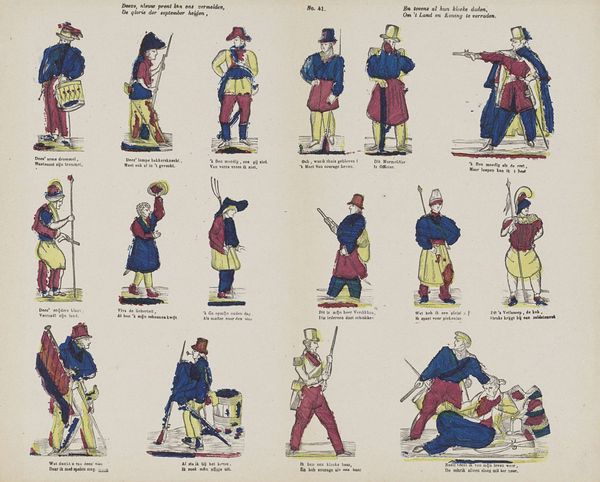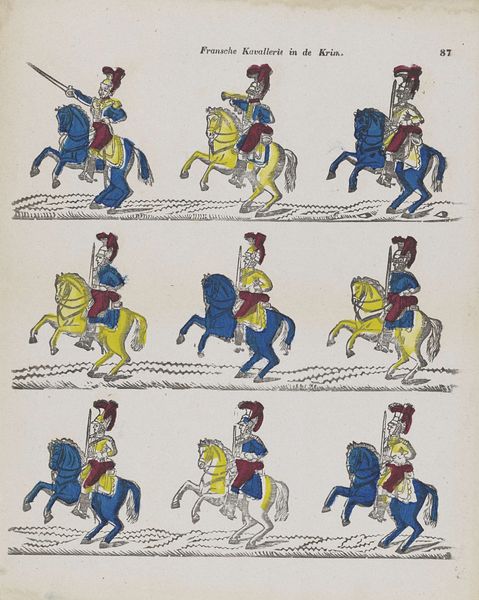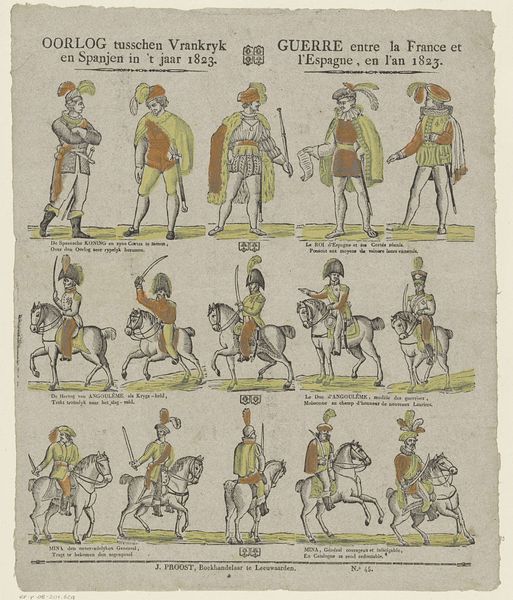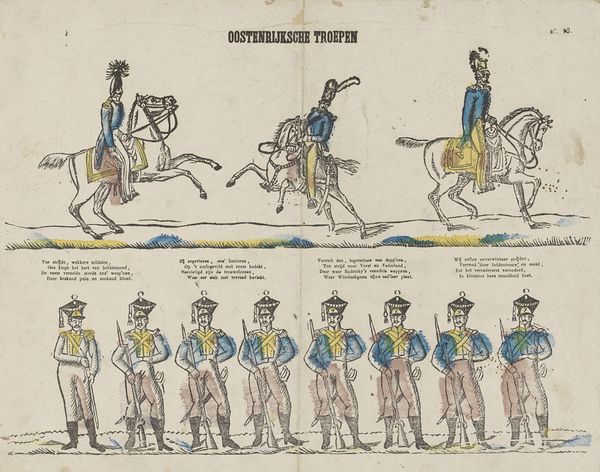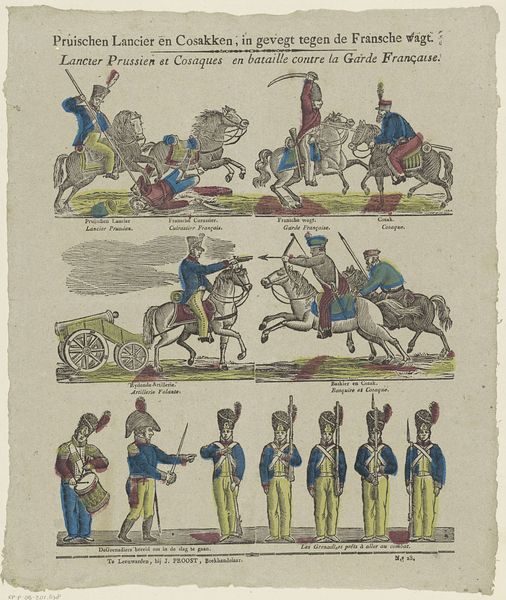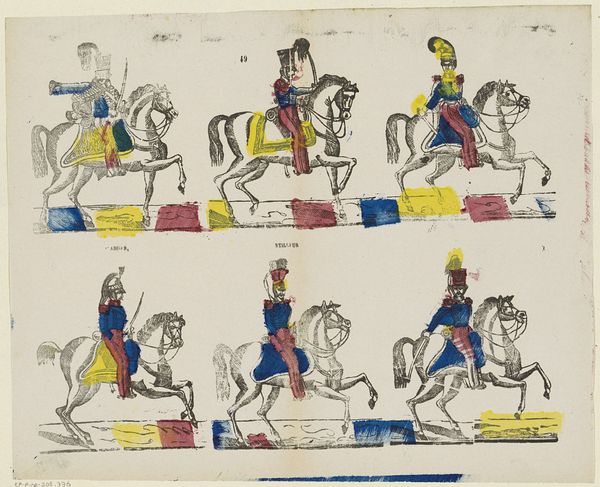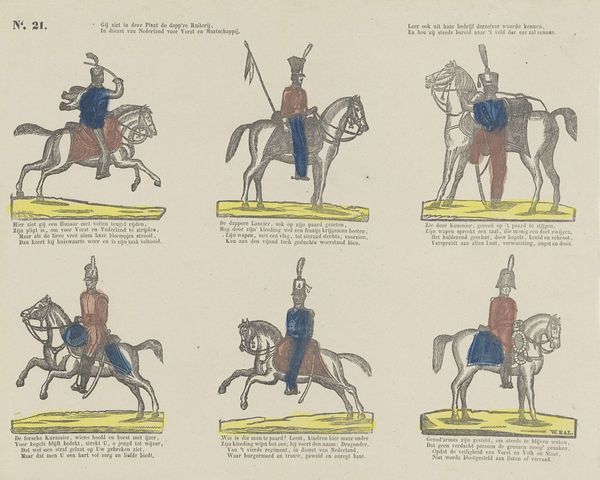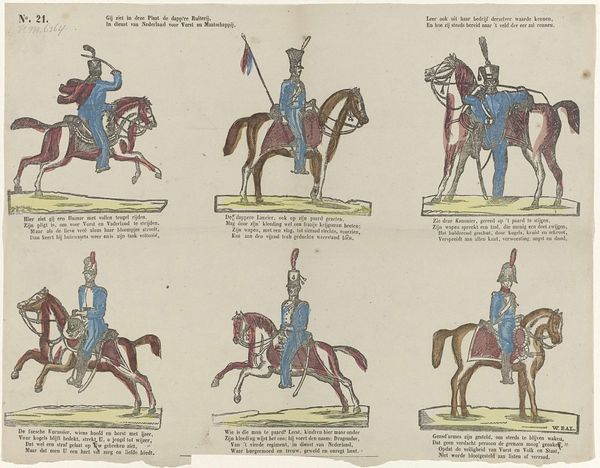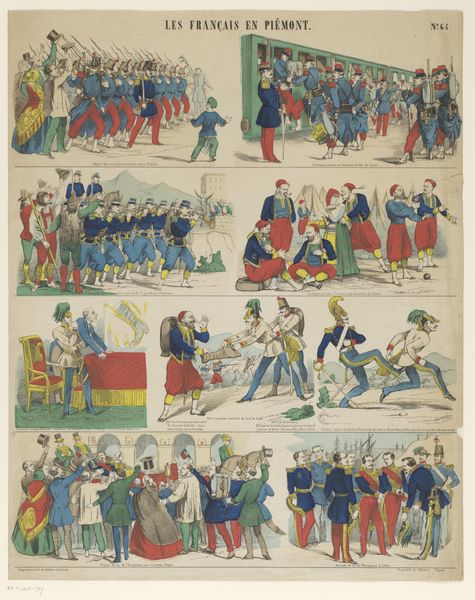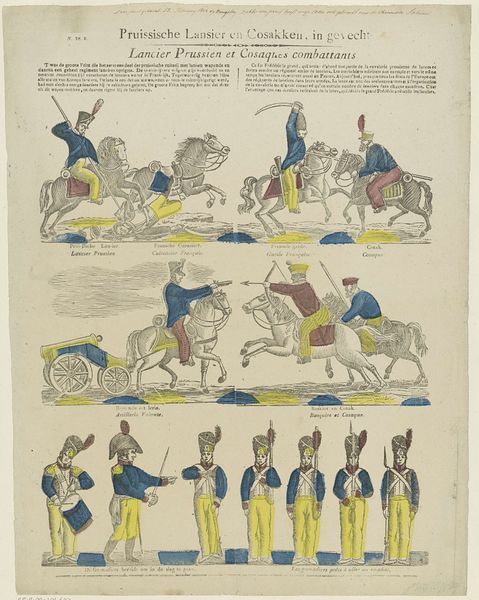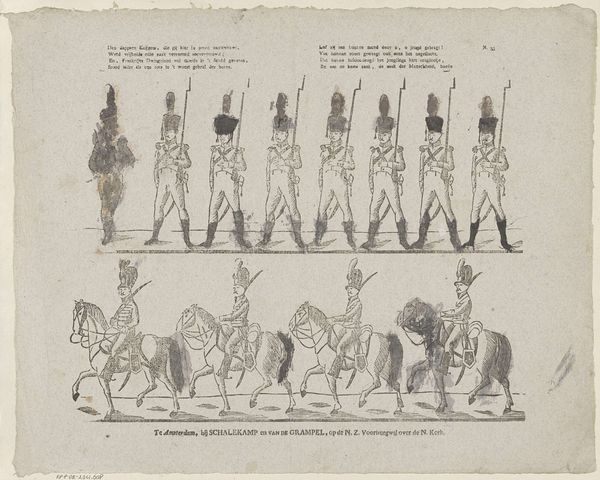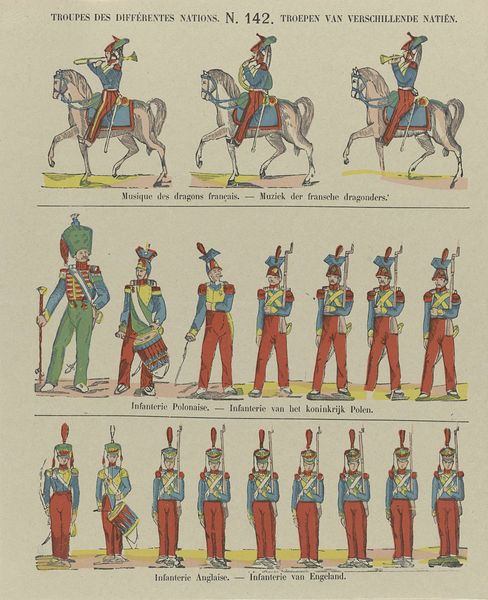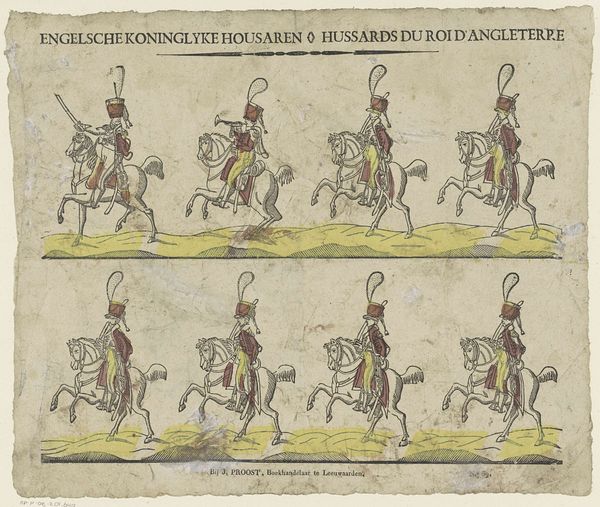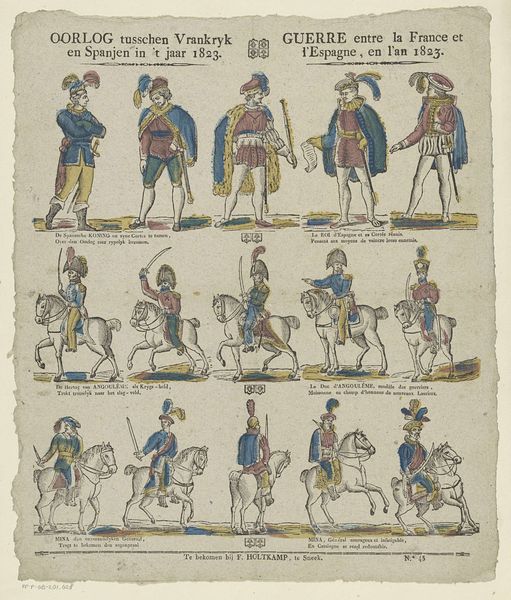
drawing, lithograph, print
#
drawing
#
lithograph
# print
#
genre-painting
#
history-painting
Dimensions: height 311 mm, width 374 mm
Copyright: Rijks Museum: Open Domain
Curator: Here we have "Oostenrijksche troepen," a print and lithograph piece created by Lutkie & Cranenburg sometime between 1848 and 1881. Editor: My immediate impression is one of rigid order and a sort of unsettling formality. The lines of soldiers seem almost toy-like, but their fixed stares feel intensely serious. Curator: Indeed. It’s fascinating how Lutkie & Cranenburg managed to convey both the spectacle and the potential threat inherent in a military display. These are genre-painting and history-painting themes combined here, representing Austrian troops. One wonders the specific context of their depiction. Editor: The uniforms are especially telling. Note the details - the plume hats, the color-coded distinctions in their attire... Military uniforms have always served as a complex symbolic language, indicating not just allegiance, but also status, discipline, and collective identity. This representation carries the visual weight of authority. Curator: Precisely. The print likely served a purpose beyond mere artistic expression, perhaps functioning as a piece of political propaganda, celebrating Austrian military strength during a time of considerable political and social upheaval in Europe. Lithographs made art accessible to a wider audience, making it a perfect medium to share social narratives. Editor: There's a noticeable contrast in tone too, if I might add. The stiff formation below seems to clash with the lively postures of the horses above, which project a romantic image of adventure. Is that tension intentionally playing on the audience’s conflicting views towards the military? Curator: An astute observation. This duality mirrors the complex relationship society had with the military - admired for its protective strength yet feared for its capacity for violence and oppression. Editor: Yes, and perhaps hinting at the burdens or costs underlying martial strength. I now feel the weight of its history a bit more. Curator: Exactly! Understanding this historical lens helps illuminate these deeper emotional layers that the images carry, beyond its visual appeal. Editor: Seeing these rigid ranks juxtaposed with a sense of nostalgic dynamism makes for a multi-layered understanding, connecting both past and present interpretations.
Comments
No comments
Be the first to comment and join the conversation on the ultimate creative platform.
